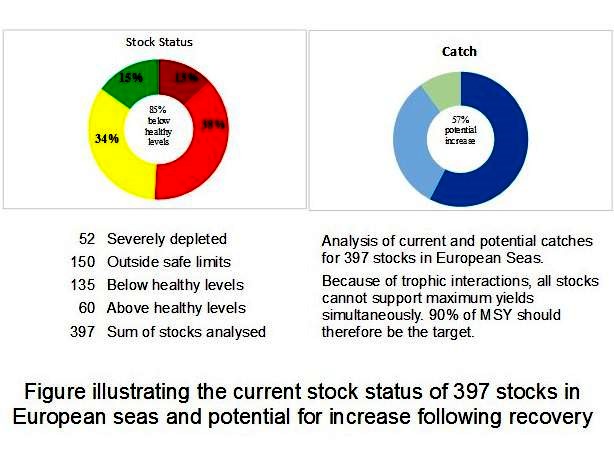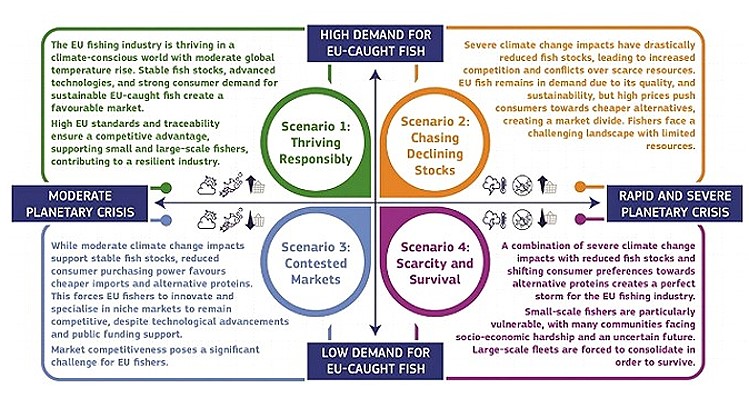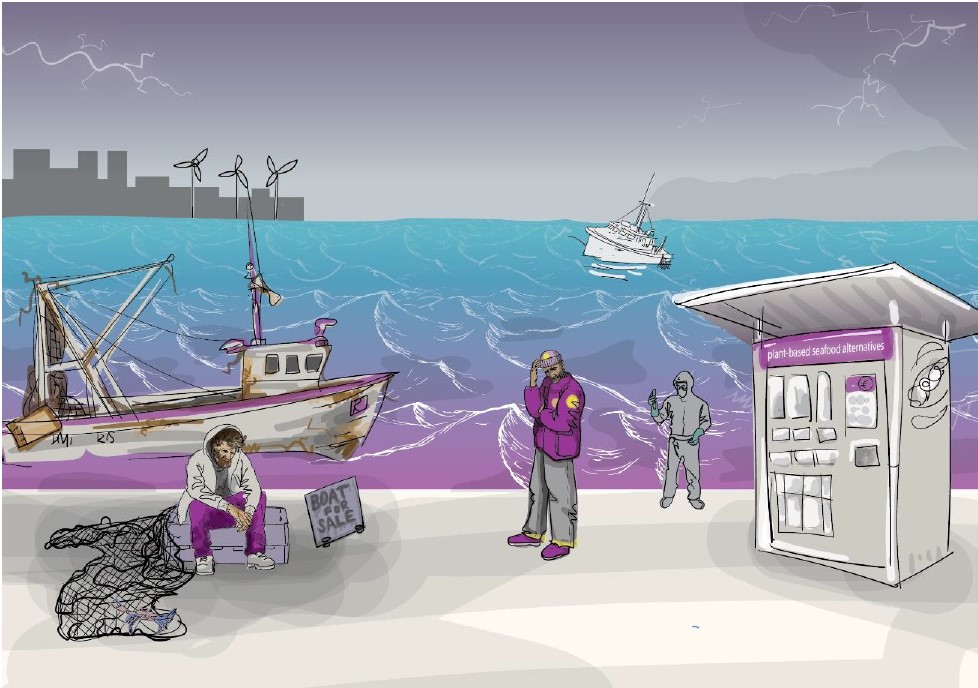Not a trivial question; especially considering that nine years back a detailed study on the state of fisheries resources in European waters demonstrated the enormous benefits of the full implementation of the reformed European Common Fisheries Policy (CFP). “Our data show that only 12 percent of the stocks currently meet the requirements of the EU’s CFP,” explained Dr. Rainer Froese of GEOMAR, the head of the study commissioned by the environmental organisation OCEANA in 2016.
An international expert team analysed the data of 397 stocks of fish and other seafood in the European seas, from the Barents Sea to the Black Sea, trying to understand the benefits of better management. “The result surprised me in its clarity,” admitted Dr. Froese. The study showed that overall yields could grow by 57 percent if the fish stocks were initially rebuilt and then cautiously managed. Stocks such as haddock and cod in the North Sea or cod and herring in the western Baltic Sea could even produce three times more!

Rebuilding of the stocks would take only a few years, depending on their current state of health. The “cautious fishing” proposed in the study would mean that the extraction level should be only 90 per cent of the maximum sustainable yield of each species (MSY), because species interact with one another in nature. The basic principles of an ecosystem approach to fisheries should have rebuild diverse and productive ecosystems: (a) take out less than is regrown; (b) let fish grow and reproduce before capture; (c) use fishing gear with low impact on the environment and on other species; (d) provide refuge or no-take areas as reservoirs of genetic diversity; and (e) maintain functional food webs by reduced fishing of forage species, such as anchovies, sardines, or herring. The study was formally published in Marine Policy (1).
Yet, landings almost halved in the meantime and the outlook is rather dire, especially for small-scale fishers who get few if any quota. Nominally reserved areas for small-scale fishers, e.g. in Italy face challenges from incursions of industrial vessels, and fishers of struggle with difficult market access. Meanwhile, warming surface water and other increasing effects of climate change lead to reduced oxygen and acidification. This in turn changes species composition, reduces growth and leads to lower catches.
Against this background the European Commission commissioned a study to explore likely conditions of small-scale and industrial fisheries by 2050 under different climate change and market scenarios.

The most optimistic scenario is called ‘Thriving Responsibility’ “assuming the world has limited global temperature rise, to a moderate increase above pre-industrial levels. The EU has met its emission reduction targets and contributed to curbing biodiversity loss, including through improved implementation of the CFP for the exploitation of fish stocks and other environmental policies.” At least some elements hark back to advice and principles agreed more than 10 years ago at the adoption of the CFP reform in 2013.

The most pessimistic scenario is labelled as ‘Scarcity and Survival’
Conversely, the most pessimistic scenario is labelled ‘Scarcity and Survival’ anticipates to a large extent business as usual. In the event, “the EU fishing industry faces a perfect storm of challenges. Climate change drastically alters marine ecosystems, making fish stocks unpredictable and harder to manage. This has required the EU to further reduce quotas and other fishing opportunities, forcing the processing industry to rely more on cheap imports, which are also facing reductions owing to the climate catastrophe worldwide and their need to prioritise their domestic markets.”
The full study report (2) and other supporting documentation about the scenario development process that invites further reflection is available on the Commission website. The challenges inherent in all four scenarios compared to the opportunities highlighted years ago, should most of all trigger determined action to rebuild healthy resources and offer viable perspectives to low impact, profitable fisheries within the near future.
(1) Froese, R., Winker, H., Coro, G., Demirel, N., Tsikliras, A.C., Dimarchopoulou, D., Scarcella, G., Quaas, M. and Matz-Lück, N. (2018). Status and rebuilding of European fisheries. Marine Policy, 93:159-170. https://doi.org/10.1016/j.marpol.2018.04.018
(2) Davies, M., Macfadyen, G., Brugere, C., Chiarelli, N., Dale, F., and Caillart, B. (2024). Foresight Study on Fishers of the Future. Publications Office of the European Union, 2024, 155p. doi: 10.2926/3984926
